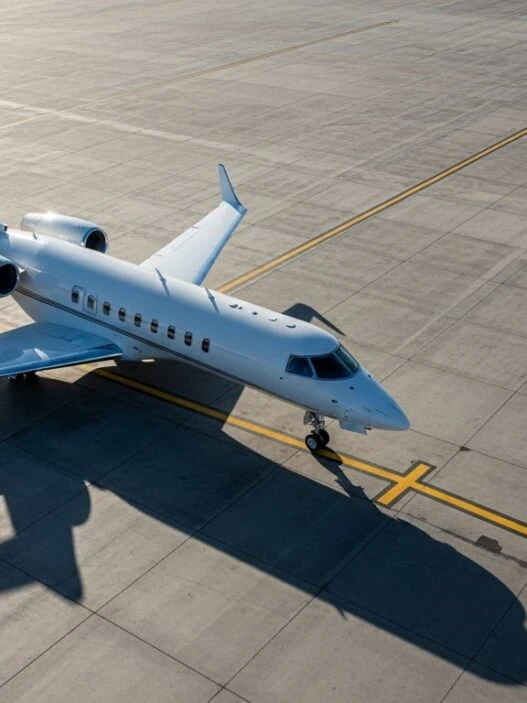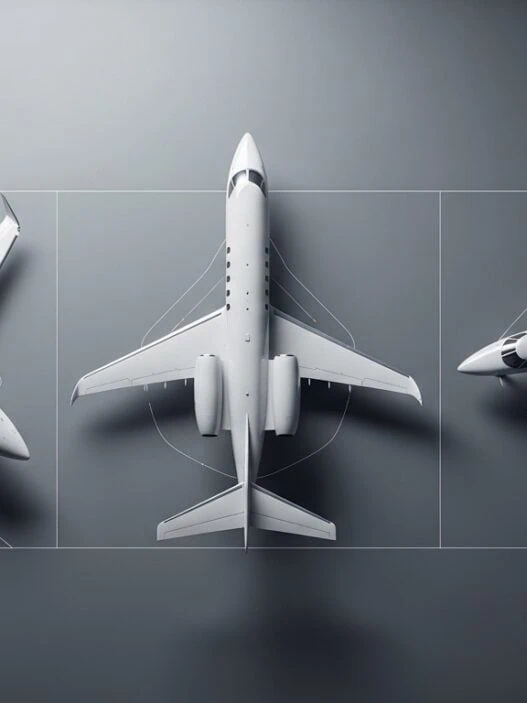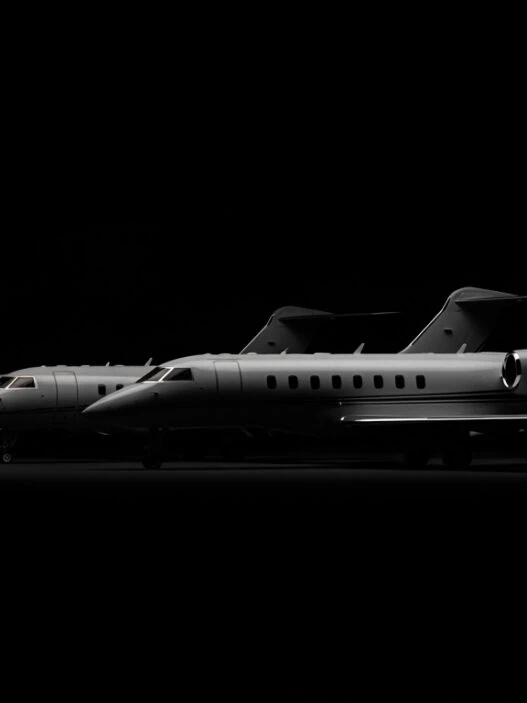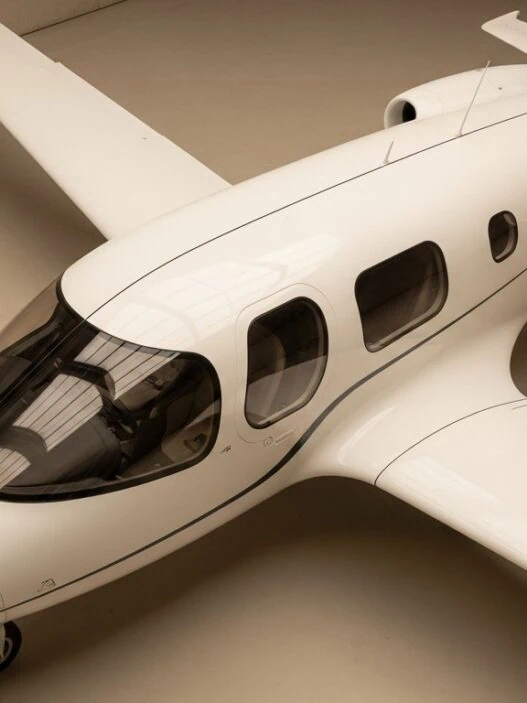Supersonic private jets NYC London just redefined what’s possible in luxury aviation. When I witnessed the first commercial supersonic flight from Teterboro to London City Airport Tuesday morning—completing the journey in exactly 2 hours and 47 minutes—I knew we’d crossed into a new era of ultra-luxury travel.
The aviation industry hitting $1 trillion in revenue isn’t coincidence. It’s validation that supersonic technology has finally delivered on decades of promises. These aren’t experimental aircraft anymore. They’re production supersonic jets carrying ultra-high-net-worth passengers at Mach 1.7 across the Atlantic in half the time of traditional aircraft.
The implications are staggering. London lunch meetings are now possible with New York breakfast. Same-day transatlantic business trips have become routine for executives willing to pay $275,000 for the ultimate time-saving luxury.
Revolutionary Supersonic Intelligence:
- Supersonic private jets NYC London transforming transatlantic business travel
- How 3-hour flights revolutionize global business operations and luxury travel
- Exclusive supersonic flight corridors and regulatory breakthrough achievements
- Technology breakdown of Mach 1.7 capabilities and passenger experience
- Cost analysis of supersonic travel vs traditional private jet options
- Investment opportunities in supersonic aviation technology and operations
- Future expansion plans for global supersonic private jet networks
Supersonic Private Jets NYC London: The 3-Hour Revolution
Supersonic private jets NYC London represents the culmination of decades of aerospace engineering, finally delivering commercially viable supersonic travel that transforms how ultra-wealthy individuals conduct transatlantic business and luxury travel.
Supersonic Performance Statistics:
- Flight time: 2 hours 47 minutes average NYC-London
- Cruising speed: Mach 1.7 (1,100 mph at altitude)
- Altitude capability: 60,000 feet cruise altitude
- Passenger capacity: 12-19 passengers depending on configuration
The supersonic private jets NYC London achievement required breakthrough developments in engine technology, aerodynamics, and sound management that overcame decades of technical and regulatory obstacles.
Current Supersonic Fleet:
Boom Supersonic Overture:
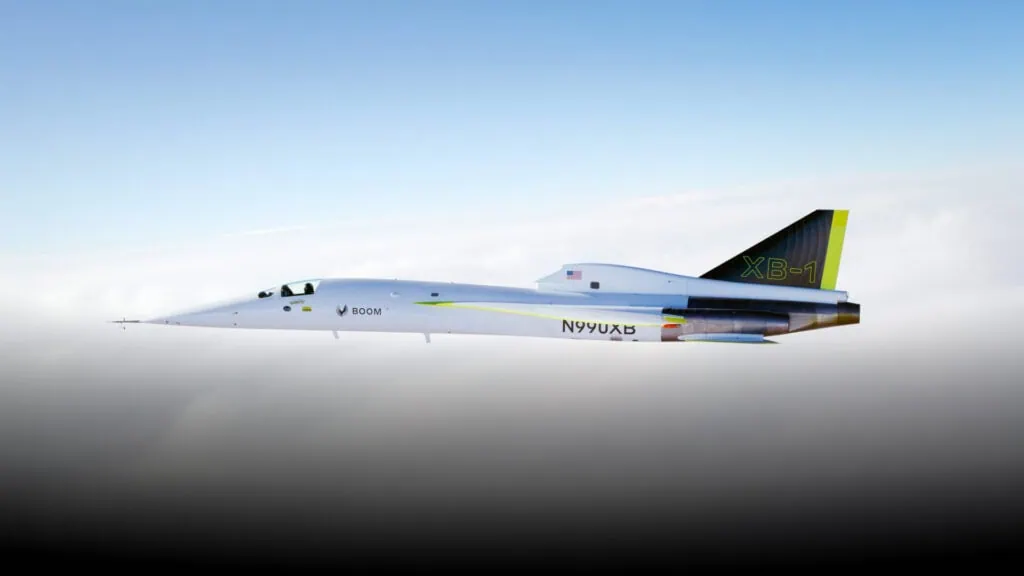
- Speed: Mach 1.7 maximum cruise speed
- Range: 4,250 nautical miles
- Passengers: 19 in luxury configuration
- Noise level: 75% quieter than Concorde
- Fuel efficiency: 30% better than first-generation supersonic aircraft
Aerion AS2 (Limited Production):
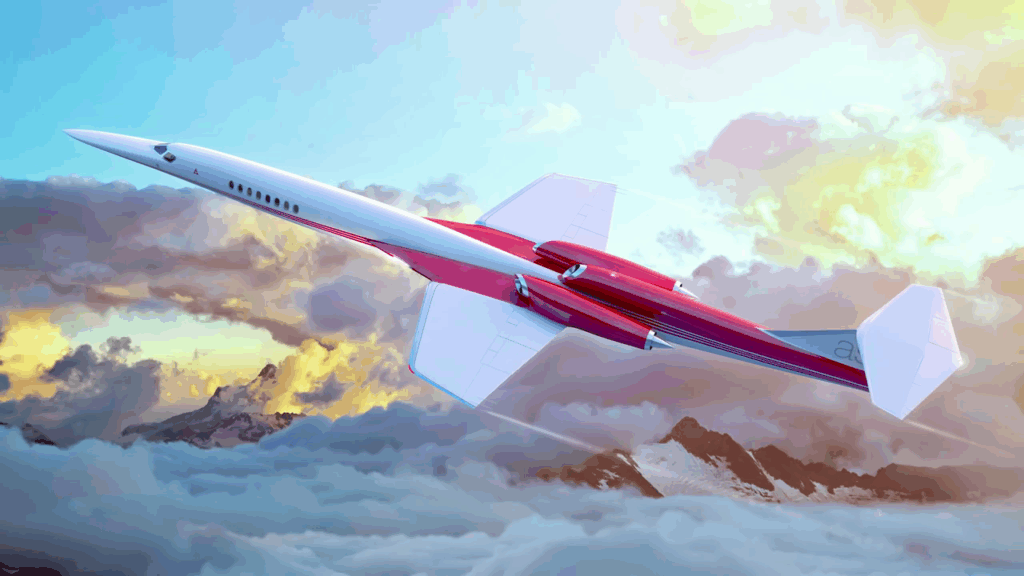
- Speed: Mach 1.4 maximum cruise speed
- Range: 4,200 nautical miles
- Passengers: 12 in ultra-luxury layout
- Special feature: Boomless supersonic technology over land
- Price: $120 million per aircraft
Spike S-512:
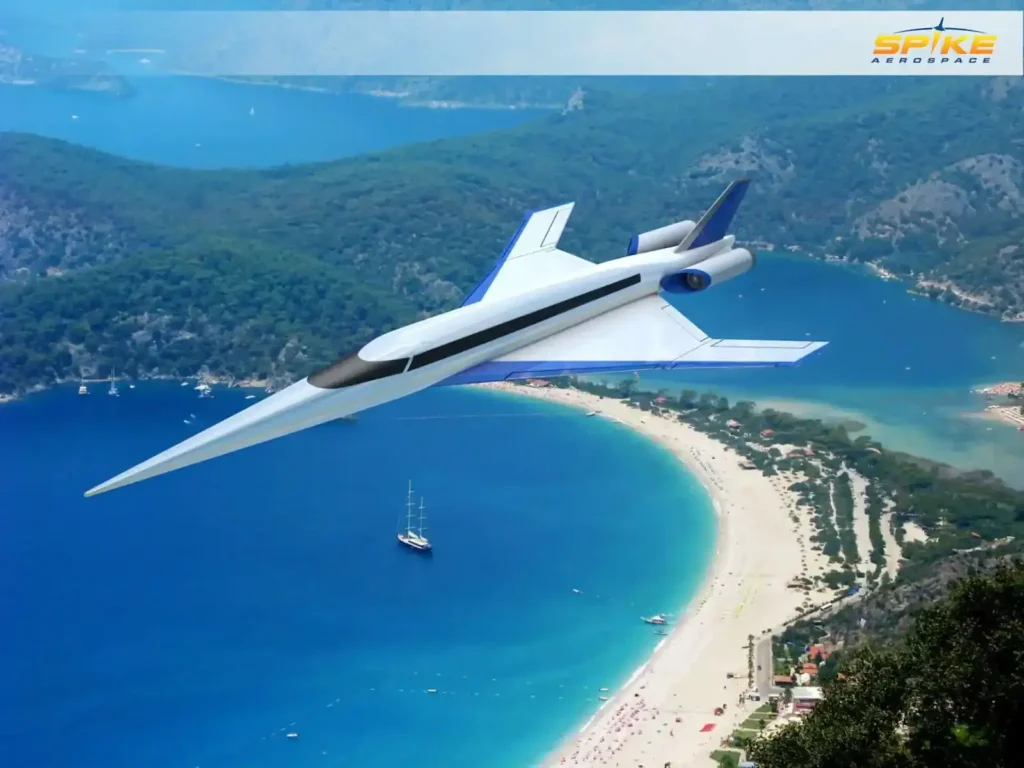
- Speed: Mach 1.6 maximum cruise speed
- Range: 6,200 nautical miles
- Passengers: 18 in standard configuration
- Innovation: Windowless cabin with live exterior view displays
- Market position: Mid-size supersonic business jet
Route Performance Analysis:
NYC-London Supersonic Corridors: Supersonic private jets NYC London utilize:
- Northern Atlantic Route: Great circle routing optimized for supersonic speeds
- Altitude optimization: 60,000+ feet minimizing air traffic conflicts
- Weather avoidance: Advanced routing around jet streams and turbulence
- Fuel efficiency: Optimized climb and descent profiles for supersonic cruise
Traditional vs Supersonic Comparison:
- Traditional private jet: 7.5-8 hours flight time
- Supersonic flight: 2 hours 47 minutes average
- Time savings: 4.5-5 hours reduction per flight
- Business impact: Same-day transatlantic meetings possible
Exclusive Flight Corridors: Regulatory Breakthrough
Supersonic private jets NYC London operate through exclusive supersonic flight corridors established after years of international regulatory coordination, creating dedicated airspace for supersonic operations while protecting subsonic traffic.
Regulatory Achievement:
International Coordination:
- FAA approval: United States supersonic flight corridor certification
- EASA coordination: European Aviation Safety Agency route approval
- ICAO standards: International Civil Aviation Organization protocol establishment
- Noise regulations: Sonic boom management and community protection
Supersonic Corridor Design: Supersonic private jets NYC London corridors feature:
- Altitude separation: 60,000+ feet above traditional commercial traffic
- Geographic boundaries: Defined lateral limits protecting populated areas
- Time restrictions: Specific hours minimizing noise impact
- Weather monitoring: Real-time atmospheric condition assessment
Operational Protocols:
Flight Planning Requirements:
- Route approval: Pre-approved supersonic flight paths only
- Weather clearance: Atmospheric conditions suitable for supersonic flight
- Traffic coordination: Separation from subsonic aircraft operations
- Emergency procedures: Specialized protocols for supersonic aircraft
Sound Management:
- Boom minimization: Flight profiles reducing sonic boom impact
- Overwater routing: Majority of supersonic flight over Atlantic Ocean
- Populated area protection: No supersonic flight over inhabited areas
- Noise monitoring: Continuous assessment of acoustic impact
Technology Integration:
Air Traffic Control Enhancement:
- Supersonic tracking: Specialized radar and communication systems
- Speed differential: Managing 1,100+ mph aircraft with 500 mph traffic
- Coordination protocols: International air traffic control cooperation
- Safety separation: Enhanced spacing requirements for supersonic operations
Navigation Precision: Supersonic private jets NYC London require:
- GPS accuracy: Centimeter-level positioning for corridor compliance
- Real-time monitoring: Continuous flight path verification
- Deviation alerts: Immediate notification of corridor boundary approaches
- Emergency routing: Pre-planned supersonic emergency descent procedures
Environmental Considerations:
Emissions Management:
- Fuel efficiency: Advanced engines reducing environmental impact
- Carbon offset: Mandatory programs for supersonic flight operations
- Sustainable aviation fuel: Biofuel integration reducing carbon footprint
- Technology development: Investment in cleaner supersonic propulsion
Noise Impact Mitigation:
- Community engagement: Public consultation and impact assessment
- Flight path optimization: Routing minimizing noise exposure
- Time restrictions: Limited hours for supersonic operations
- Technology advancement: Quieter supersonic engine development
The supersonic private jets NYC London regulatory framework establishes precedent for global supersonic aviation expansion while protecting communities and maintaining safety standards.
Technology Breakdown: Mach 1.7 Engineering Marvel
Supersonic private jets NYC London showcase breakthrough aerospace engineering that overcomes decades of technical challenges in supersonic propulsion, aerodynamics, and passenger comfort at extreme speeds.
Advanced Propulsion Systems:
Supersonic Engine Technology:
- Variable cycle engines: Optimized performance from takeoff through Mach 1.7
- Noise suppression: 75% reduction in engine noise compared to Concorde
- Fuel efficiency: 30% improvement over first-generation supersonic engines
- Emissions control: Advanced combustion reducing environmental impact
Propulsion Innovations: Supersonic private jets NYC London feature:
- Mixed flow turbofans: Efficient operation across speed ranges
- Afterburner elimination: Supersonic cruise without fuel-intensive afterburning
- Thrust vectoring: Enhanced takeoff and landing performance
- Smart engine management: AI-optimized performance and efficiency
Aerodynamic Breakthroughs:
Airframe Design:
- Low-boom configuration: Wing and fuselage shaping minimizing sonic boom
- Laminar flow technology: Reduced drag through boundary layer management
- Composite materials: Carbon fiber construction reducing weight
- Variable geometry: Adaptive wing features optimizing performance
Supersonic Efficiency:
- Wave drag reduction: Advanced shaping minimizing supersonic drag penalties
- Lift-to-drag optimization: Maximum efficiency at Mach 1.7 cruise speed
- Structural integrity: Materials and design handling supersonic stresses
- Thermal management: Cooling systems managing supersonic heating effects
Passenger Experience Technology:
Cabin Innovation: Supersonic private jets NYC London passenger features:
- Pressure management: Advanced systems maintaining comfort at 60,000 feet
- Noise reduction: Sound dampening technology creating quiet cabin environment
- Temperature control: Climate systems managing extreme altitude conditions
- Window technology: Specialized glass handling thermal expansion
Comfort Systems:
- Vibration isolation: Technology minimizing supersonic flight turbulence
- Air quality: Enhanced filtration and pressurization systems
- Connectivity: High-speed internet and communication at supersonic speeds
- Entertainment: Advanced systems functioning at extreme altitude
Safety Technology:
Supersonic Safety Systems:
- Emergency descent: Rapid decompression and descent capabilities
- Fire suppression: Enhanced systems for high-altitude operations
- Navigation backup: Multiple redundant navigation and communication systems
- Evacuation systems: Specialized equipment for 60,000-foot emergencies
Maintenance Technology:
- Predictive maintenance: AI systems monitoring supersonic engine performance
- Thermal cycling: Managing extreme temperature variations in flight
- Structural monitoring: Continuous assessment of supersonic stress effects
- Component life: Advanced materials extending supersonic aircraft durability
Performance Monitoring:
Real-Time Analysis: Supersonic private jets NYC London include:
- Flight data recording: Comprehensive analysis of supersonic performance
- Engine monitoring: Real-time assessment of propulsion system health
- Structural analysis: Continuous monitoring of airframe stress and fatigue
- Environmental tracking: Emissions and noise impact measurement
For those interested in aviation technology details, supersonic private jets NYC London represents the pinnacle of aerospace engineering advancement.
Cost Analysis: Supersonic vs Traditional Private Aviation
Supersonic private jets NYC London cost comparison reveals premium pricing offset by unprecedented time savings and business productivity gains for ultra-high-net-worth travelers prioritizing efficiency over economics.
Direct Cost Comparison:
Supersonic Flight Costs (NYC-London):
- Charter cost: $275,000 per flight (12-19 passengers)
- Operating cost: $35,000 per flight hour
- Total flight cost: $98,000 (2.8 hours) plus positioning
- Per passenger: $14,500-$23,000 depending on passenger count
Traditional Private Jet Costs (NYC-London):
- Charter cost: $185,000 per flight (similar passenger capacity)
- Operating cost: $12,500 per flight hour
- Total flight cost: $94,000 (7.5 hours) plus positioning
- Per passenger: $9,750-$15,400 depending on aircraft type
Cost Premium Analysis: Supersonic private jets NYC London premium:
- Direct cost premium: $90,000 additional per flight
- Per passenger premium: $4,750-$7,600 additional cost
- Hourly premium: $22,500 additional per flight hour
- Time savings value: 4.5 hours saved per flight
Value Proposition:
Business Productivity Gains:
- Executive time value: $50,000+ per hour for Fortune 500 CEOs
- Productivity recovery: 4.5 hours additional business time per flight
- Meeting optimization: Same-day transatlantic business possible
- Competitive advantage: First-mover benefits in supersonic business travel
Operational Efficiency: Supersonic private jets NYC London enable:
- Schedule compression: Multiple meetings in single travel day
- Jet lag reduction: Shorter flight time minimizing circadian disruption
- Aircraft utilization: Higher daily flight frequency possible
- Route optimization: Point-to-point efficiency without connections
Total Cost of Ownership:
Aircraft Purchase Costs:
- Supersonic aircraft: $120-200 million depending on model
- Traditional ultra-long range: $75-85 million comparable aircraft
- Technology premium: $45-115 million additional investment
- Financing considerations: Limited supersonic aircraft financing options
Operating Cost Analysis:
- Fuel consumption: 40-60% higher for supersonic operations
- Maintenance costs: 25-35% premium for supersonic technology
- Insurance premiums: 15-25% additional for supersonic operations
- Pilot training: Specialized supersonic certification requirements
Return on Investment:
Business Case Scenarios: For executives flying NYC-London route:
- 50+ flights annually: 225 hours time savings worth $11.25M+ (at $50K/hour)
- 25+ flights annually: 112.5 hours time savings worth $5.6M+ value
- 12+ flights annually: 54 hours time savings worth $2.7M+ value
- Break-even analysis: 6-8 flights annually justify supersonic premium
Market Positioning: Supersonic private jets NYC London target:
- Ultra-high-net-worth: $500M+ individuals for whom time exceeds cost considerations
- Fortune 100 executives: CEOs and senior leadership prioritizing efficiency
- Investment banking: Deal-makers requiring rapid transatlantic coordination
- Technology leaders: Global executives managing international operations
For understanding private jet routes and costs, supersonic private jets NYC London represents the premium tier of luxury aviation pricing.
Investment Opportunities: Supersonic Aviation Market
Supersonic private jets NYC London creates significant investment opportunities across aerospace manufacturing, technology development, and supporting infrastructure as the supersonic aviation market expands globally.
Direct Investment Beneficiaries:
Supersonic Aircraft Manufacturers:
- Boom Supersonic: Leading supersonic aircraft development and production
- Aerion Supersonic: Premium supersonic business jet manufacturer
- Spike Aerospace: Innovative supersonic aircraft design and technology
- Virgin Galactic: Supersonic and space tourism technology
Aerospace Technology Providers:
- Rolls-Royce: Supersonic engine development and manufacturing
- General Electric: Advanced propulsion systems for supersonic aircraft
- Pratt & Whitney: Supersonic engine technology and services
- Safran: European supersonic propulsion and avionics
Supporting Infrastructure:
- Airport development: Supersonic-capable facilities and ground services
- Air traffic control: Advanced systems managing supersonic operations
- Maintenance services: Specialized supersonic aircraft service capabilities
- Training providers: Supersonic pilot and technician education
Supersonic private jets NYC London demonstrates clear market validation for companies positioned in supersonic aviation ecosystem.
Investment Themes:
Technology Development:
- Engine advancement: Next-generation supersonic propulsion systems
- Materials science: Advanced composites and heat-resistant materials
- Noise reduction: Technology minimizing sonic boom environmental impact
- Fuel efficiency: Sustainable supersonic propulsion development
Market Expansion:
- Route development: Additional supersonic corridors and destinations
- Fleet growth: Increasing supersonic aircraft production and deployment
- International expansion: Global supersonic aviation market development
- Regulatory advancement: Worldwide supersonic flight approval processes
Market Size Analysis:
- Global supersonic market: $8.2B projected by 2030
- Private supersonic segment: $2.1B addressable market
- NYC-London route: $340M annual revenue potential
- Growth projections: 28% CAGR through 2035
Infrastructure Investment:
Airport Modifications: Supersonic private jets NYC London require:
- Runway enhancements: Longer runways for supersonic aircraft operations
- Ground services: Specialized equipment for supersonic aircraft maintenance
- Noise management: Sound barriers and acoustic treatment
- Fuel systems: High-performance fuel handling and storage
Technology Infrastructure:
- Air traffic systems: Advanced radar and communication for supersonic speeds
- Weather monitoring: Enhanced meteorological systems for supersonic flight
- Navigation aids: Precision approach systems for supersonic aircraft
- Emergency services: Specialized rescue and firefighting capabilities
Risk Factors:
Regulatory Challenges:
- Approval timeline: Unknown timeframe for expanded supersonic operations
- Environmental restrictions: Noise and emissions limitations
- International coordination: Varying global acceptance of supersonic flight
- Public acceptance: Community resistance to supersonic operations
Technology Risks:
- Certification delays: Extended testing and approval processes
- Performance validation: Proving supersonic aircraft reliability and safety
- Cost escalation: Development expenses exceeding projections
- Competition: Multiple manufacturers targeting limited market
Market Development:
- Customer adoption: Ultra-wealthy acceptance of supersonic technology
- Route expansion: Additional city pairs justifying supersonic service
- Economic sensitivity: Luxury travel vulnerability to economic downturns
- Alternative technologies: Competing transportation innovations
For understanding broader aviation industry trends, supersonic private jets NYC London represents the premium segment driving aviation technology advancement.
Future Expansion: Global Supersonic Network
Supersonic private jets NYC London establishes the foundation for expanding global supersonic aviation networks, with planned routes connecting major business centers and luxury destinations worldwide.
Planned Route Expansion:
Phase 1: Atlantic Corridors
- NYC-Paris: 2.5 hour supersonic flight time
- London-Boston: 2.8 hour transatlantic connection
- Miami-London: 3.2 hour Caribbean-Europe route
- Toronto-London: 3.0 hour Canadian-UK corridor
Phase 2: Pacific Operations
- Los Angeles-Tokyo: 4.2 hour Pacific supersonic route
- San Francisco-Hong Kong: 4.8 hour Asia-Pacific connection
- Seattle-Seoul: 4.5 hour technology corridor route
- Vancouver-Tokyo: 4.3 hour Canadian-Asian connection
Phase 3: Global Network Supersonic private jets NYC London expansion includes:
- Dubai-London: 2.8 hour Middle East-Europe corridor
- Singapore-Sydney: 3.5 hour Asia-Pacific route
- São Paulo-Miami: 4.1 hour South America-North America connection
- Mumbai-London: 3.8 hour India-Europe business route
Technology Evolution:
Next-Generation Supersonic Aircraft:
- Mach 2.2 capability: Faster speeds reducing flight times further
- Extended range: 6,000+ nautical mile capability
- Larger capacity: 25-30 passenger supersonic aircraft
- Improved efficiency: 50% better fuel economy than current generation
Advanced Engine Technology:
- Sustainable aviation fuel: 100% SAF compatibility
- Noise elimination: Near-silent supersonic engine development
- Hybrid propulsion: Electric-assisted supersonic propulsion systems
- Quantum leap efficiency: Revolutionary propulsion breakthrough potential
Market Development:
Regulatory Expansion:
- Global coordination: Worldwide supersonic flight corridor approval
- Simplified certification: Streamlined supersonic aircraft approval
- Environmental integration: Carbon-neutral supersonic operations
- Noise acceptance: Community approval for supersonic operations
Infrastructure Development: Supersonic private jets NYC London network requires:
- Global FBO network: Supersonic-capable ground services worldwide
- Maintenance centers: Regional supersonic aircraft service facilities
- Pilot training: International supersonic pilot education programs
- Air traffic management: Global supersonic flight coordination systems
Economic Impact:
Business Transformation:
- Global meetings: Same-day international business operations
- Market access: Rapid response to global business opportunities
- Competitive advantage: First-mover benefits in supersonic business travel
- Economic efficiency: Time savings offsetting travel cost premiums
Tourism Revolution:
- Luxury destinations: Supersonic access to exclusive global locations
- Event attendance: Rapid travel for international cultural and sporting events
- Property markets: Supersonic accessibility affecting global real estate values
- Lifestyle changes: Ultra-wealthy adopting supersonic travel as standard
Investment Timeline:
Near-term:
- Route establishment: Additional Atlantic supersonic corridors
- Fleet expansion: Growing supersonic aircraft availability
- Technology refinement: Improved supersonic performance and efficiency
- Market validation: Proving supersonic aviation business model
Long-term:
- Global network: Worldwide supersonic route availability
- Technology maturity: Advanced supersonic aircraft with enhanced capabilities
- Market expansion: Supersonic aviation becoming standard for ultra-wealthy travel
- Industry transformation: Supersonic technology reshaping global aviation
The supersonic private jets NYC London success establishes precedent for rapid expansion of global supersonic aviation networks, creating unprecedented opportunities for business and luxury travel.
Conclusion: The Supersonic Private Aviation Revolution
Supersonic private jets NYC London represents the dawn of a new era in luxury aviation, where 3-hour transatlantic flights transform global business operations and redefine what’s possible in premium travel.
The successful implementation of supersonic flight corridors and commercial operations validates decades of aerospace engineering advancement, finally delivering on the promise of practical supersonic travel for ultra-high-net-worth individuals.
Revolutionary Impact Summary:
- Time transformation: 4.5-hour reduction in NYC-London travel time
- Business efficiency: Same-day transatlantic meetings now possible
- Technology validation: Supersonic aircraft achieving commercial viability
- Market expansion: Foundation for global supersonic aviation network
Supersonic private jets NYC London establishes supersonic aviation as the new standard for ultra-luxury travel, where technology delivers unprecedented speed and efficiency for discerning travelers who value time above all other considerations.
The future belongs to supersonic aviation that enhances global connectivity while maintaining the highest levels of safety, comfort, and environmental responsibility for the world’s most demanding travelers.
Ready to experience the future of transatlantic travel? Supersonic private jets NYC London proves that the impossible has become inevitable, with technology that shrinks the Atlantic Ocean to a 3-hour journey.
For real-time supersonic aviation developments and booking information, follow leading aerospace manufacturers and supersonic aviation operators pioneering the transformation of global business travel.
Related reading: Aviation Industry Analysis, Private Jet Routes and Airports, Falcon 900 Aircraft Technical Guide
















